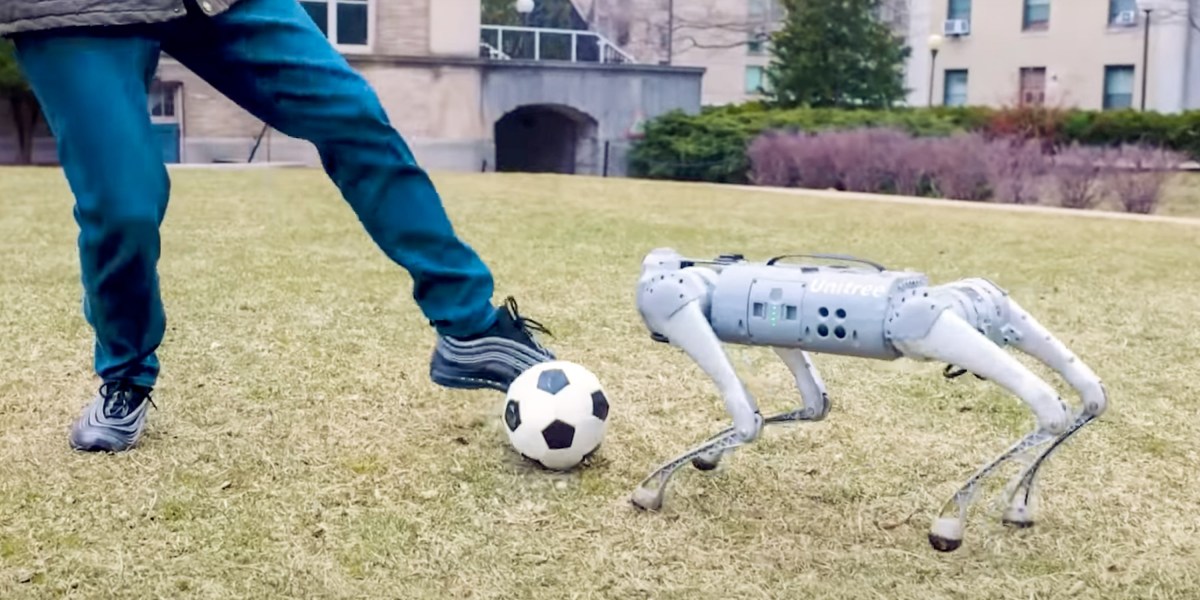Now playing: DribbleBot

“Today, most robots are wheeled. But imagine that there’s a disaster scenario, flooding, or an earthquake, and we want robots to aid humans in the search-and-rescue process. We need the machines to go over terrains that aren’t flat, and wheeled robots can’t traverse those landscapes,” says Pulkit Agrawal, EECS professor and director of the Improbable AI Lab. Previous attempts to program soccer-playing robots have assumed flat, hard ground, and the bot wasn’t “trying to run and manipulate the ball simultaneously,” says Ji.
On the hardware side, the robot has sensors that let it perceive the environment, actuators that let it apply forces, and a computer “brain” that converts sensor data into actions—all in one compact, autonomous package.
“Our robot can go in the wild because it carries all its sensors, cameras, and [computing resources] on board,” Margolis says. The team’s next steps include teaching it new skills like handling slopes and stairs.




